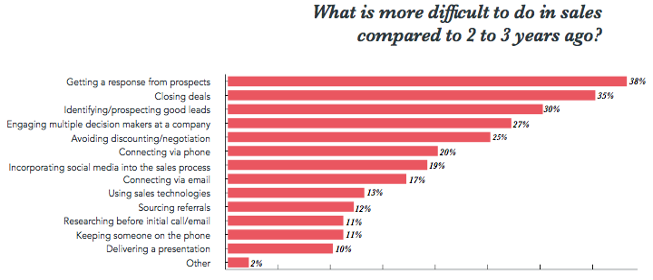In May I had the pleasure of speaking on a panel at a Grow with Hubspot event in Hong Kong.
Perhaps the most exciting part came after the panel discussion ended, and I encountered a line of people waiting to talk to me. I had some fascinating, and enlightening conversations with executives from financial institutions, supply chain professionals, and directors at fulfillment and logistics companies. There was a common thread that wove among all those conversations – how to leverage marketing campaigns to grow a business that doesn’t have a marketing department. That’s a common challenge in our industry.
A Common Misconception about Marketing
Marketing is often gets considered as a commodity “nice-to-have”.
When I initially joined Gravity Supply Chain Solutions, they referred to marketing as the “coloring department.” I had a flashback to this when Kat Warboys of HubSpot had a slide in her presentation that touched on “what outsiders think of marketing.”
 |
| Source: Grow with HubSpot Hong Kong 2017 |
The reality is that effective marketing programs today rely just as much on data science as creative thinking. Acquiring data from your sales team, customers, partners, industry analysts, and even the media is the easy part. The work comes when you try to analyze that data to help you determine what goals the sales team needs to hit, and how your marketing campaigns can help in ways that are measurable, not abstract.

I gave the following three pieces of advice to the executives I met at the HubSpot event that I try to follow every day, and I’m sure you can use them to grow your business:
Make Time To Talk To Your Customers
There are lots of people on the internet talking about creating “buyer personas”.
You compile a list of demographic data, including age, gender, marital, status, income, education, what a typical workday is like, and what media outlets and other sources do they turn to for information or advice. The goal is to identify the wants and needs of your target customers. The trouble is, these exercises alone don’t tell you anything in the context of your product. If you want to know why a buyer chooses you as a service provider or why they choose a competitor over you, you need to conduct interviews.
 |
| Grow with HubSpot Hong Kong 2017 – Marketing Panel |
For example, I interviewed a customer earlier this month and learned that their search for a PO Management system like Gravity’s got triggered by them losing a significant customer… three years ago! What happened to the sense of urgency that loss created?
Well, the project got pushed to the head office, and nothing happened. Then it was pushed on to the IT team and only two years later after our buyer tried to make the project happen was he then told to take the project on himself. The sales cycle took about four months after that point.
Just think of the value of this information!
By understanding the buyer’s environment, we know how to reach them. It explains why some buyers invest their time and political capital to resolve the pain a solution addresses, while others accept the status quo. The other insights this particular conversation revealed relate to the buying process, telling us whether additional personas are involved in the decision and their impact. Had we been marketing to the Head of IT that sat on the project for two years, we could have closed the deal quicker.
Understand Your Customers’ Buying Decision Process
With so much technology available today and so much competitive noise, it can be hard for service providers to be on the right channels with the right content at the right time for the buyer.
That’s why it’s essential to identify the buying process in your interviews. The first question that likely comes to mind is “Why can’t I just ask my sales team for insights into the process?”
It’s true, sales do have firsthand experience with the buyer and can readily tell you which influencers impact the decision, however, keep two key factors in mind:
- Thanks to the internet nearly 70% of the B2B sales cycle (depending on your industry) happens before a buyer even contacts a sales rep.
- Salespeople are not in the habit of thinking about patterns in buyer behavior. A good sales rep treats every account as unique, so the input they provide likely features something about the few deals they are pursuing at that moment.
As the old saying goes, you need to get the information “straight from the horse’s mouth.”
Take a look at the graph below. Based on Hubspot’s State of Inbound 2017 report 38% of sales people surveyed find getting a response from prospects to be the most difficult challenge. Imagine how that situation would be improved if you knew what content to deliver the prospect, at what time, via what channel. And you would know that the information was accurate because it was the actual prospect who told you.
 |
| Source: The HubSpot State of Inbound 2017: Key Takeaways, Strategic Internet Consulting |
Align Your Sales & Marketing
Marketing and sales are too often like ships passing in the night, even in companies that don’t have formal marketing departments.
Sales has little, or no, input on the development, execution and analysis of the marketing campaigns whose goals are to generate new sales leads! It’s easy to fall into “this is how we’ve always done it”, but research shows that that way of thinking can cripple your company’s growth.
Companies, where sales and marketing, have joined forces are gaining an incredible competitive advantage, and it’s easier to do than ever before. According to HubSpot, companies with strong sales and marketing alignment achieve 20% annual growth rate. Compare that to the four percent decline in annual revenue for companies with poor alignment.
It’s easy to fall into “this is how we’ve always done it”, but research shows that can cripple your company’s growth.
Today’s complex global supply chains require all parties involved to have full visibility to achieve alignment. The same applies to your sales and marketing personnel and teams. It’s all about visibility. You should work to ensure that sales are aware of, and even contributes to, the development of marketing campaigns. Marketing must have extensive visibility into how the sales team utilizes that content and this is how you reach, and even exceed, your business revenue and growth targets.




